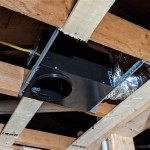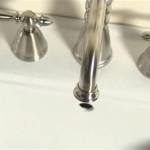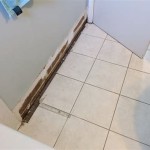Does A Bathroom Fan Need Its Own Circuit Breaker?
The question of whether a bathroom fan requires its own dedicated circuit breaker is a common one among homeowners and those undertaking bathroom renovations. The answer depends on several factors, including local electrical codes, the wattage of the fan, and the presence of other electrical devices on the same circuit. Understanding these factors is crucial to ensure electrical safety and prevent overloads that could lead to tripped breakers or, in more severe cases, electrical fires.
A dedicated circuit breaker is an electrical circuit that serves only one appliance or a limited number of specific devices. This is in contrast to general-purpose circuits that power multiple outlets and lights throughout a home. The purpose of a dedicated circuit is to provide a reliable and safe source of power for appliances that draw a significant amount of electricity or that are sensitive to voltage fluctuations. It also helps prevent overloading a circuit, as the amperage draw is carefully calculated based on the appliance's specific needs.
Electrical codes, such as those outlined in the National Electrical Code (NEC) in the United States, provide guidelines for electrical installations to ensure safety. These codes are often adopted and amended by local jurisdictions, meaning that requirements can vary. It is important to consult with a qualified electrician and local building codes to determine the specific requirements for bathroom fan circuits in a particular area. These codes often address issues such as circuit amperage, wiring methods, and grounding requirements.
Understanding the Power Requirements of a Bathroom Fan
The power consumption of a bathroom fan is measured in watts. Most residential bathroom fans consume between 50 and 100 watts. This information is typically found on a label on the fan itself or in the manufacturer's specifications. While the wattage of a single bathroom fan may seem relatively low, the cumulative effect of multiple devices on the same circuit can quickly exceed its capacity. This is particularly true if the bathroom circuit also powers high-wattage devices such as hair dryers, curling irons, or space heaters.
To determine the amperage draw of a bathroom fan, divide the wattage by the voltage of the circuit. In most residential settings, the voltage is 120 volts. Therefore, a 75-watt fan would draw approximately 0.625 amps (75 watts / 120 volts = 0.625 amps). This calculation is essential for assessing whether the fan can be safely added to an existing circuit or if a dedicated circuit is necessary.
The capacity of a circuit breaker is measured in amps. Common residential circuit breakers are rated for 15 or 20 amps. A 15-amp circuit can theoretically handle 1800 watts (15 amps x 120 volts = 1800 watts), while a 20-amp circuit can handle 2400 watts (20 amps x 120 volts = 2400 watts). However, it is generally recommended not to load a circuit to its maximum capacity. A commonly used guideline is the 80% rule, which suggests that a circuit should not be loaded beyond 80% of its rated capacity. This provides a safety margin and helps prevent nuisance tripping of the circuit breaker.
Existing Electrical Loads on the Bathroom Circuit
The most critical factor in determining whether a bathroom fan needs its own circuit is the existing electrical load on the circuit. If the bathroom circuit already powers other devices, such as lights, outlets, and particularly a GFCI (Ground Fault Circuit Interrupter) outlet, adding a bathroom fan could potentially overload the circuit. GFCI outlets are required in bathrooms to protect against electrical shock and typically draw some power themselves. Additionally, many modern building codes require that the bathroom outlets be on a dedicated 20-amp circuit to accommodate the use of hair dryers and other high-wattage appliances.
Before adding a bathroom fan to an existing circuit, it is crucial to assess the total wattage of all devices connected to that circuit. This can be done by identifying all the lights, outlets, and other appliances connected to the circuit and noting their wattage ratings. Add up the wattage of all these devices to determine the total load on the circuit. If the total load, including the bathroom fan, exceeds 80% of the circuit breaker's capacity, a dedicated circuit is strongly recommended.
For example, consider a bathroom circuit that currently powers six 60-watt lights (360 watts total) and a GFCI outlet. If a 75-watt bathroom fan is added, the total load on the circuit would be 435 watts. On a 15-amp circuit, this represents approximately 24% of the circuit's capacity, which is well within the safe operating range. However, if the circuit also powers a heated towel rack (300 watts), the total load would increase to 735 watts, or approximately 41% of the circuit's capacity. This is still acceptable. However, if a hair dryer rated at 1500 watts is frequently used on the same circuit, the total load could exceed the circuit's capacity, causing the breaker to trip.
Furthermore, consider the potential for simultaneous operation of multiple devices. If the lights, bathroom fan, and a hair dryer are all used at the same time, the circuit is almost certain to overload. Therefore, it is not only the total wattage but also the anticipated usage patterns that must be considered.
Benefits of a Dedicated Circuit for a Bathroom Fan
There are several advantages to providing a dedicated circuit for a bathroom fan, even if the existing circuit appears to have sufficient capacity. The primary benefit is enhanced electrical safety. By isolating the bathroom fan on its own circuit, the risk of overloading the circuit and potentially causing a fire is significantly reduced. This is particularly important in a bathroom environment, where moisture and electrical devices are in close proximity.
Another benefit is improved reliability. A dedicated circuit ensures that the bathroom fan receives a consistent and stable supply of power. This can prolong the lifespan of the fan motor and prevent performance issues caused by voltage fluctuations or under-voltage conditions. When other high-wattage appliances are used on the same circuit, they can draw down the voltage, potentially affecting the fan's performance and longevity.
Furthermore, a dedicated circuit simplifies troubleshooting and maintenance. If the bathroom fan malfunctions or experiences an electrical problem, it can be easily isolated and diagnosed without affecting other devices in the bathroom. This can save time and expense in the long run. If the fan is on a shared circuit, a problem with the fan could trip the breaker, affecting other devices on the circuit and making it more difficult to identify the source of the problem.
In many jurisdictions, building codes require a dedicated circuit for bathroom outlets, but they do not explicitly mandate one for the fan. However, it is often a best practice to install a dedicated circuit for the fan, especially in new construction or during a major renovation. This provides a future-proofed electrical system that can accommodate changing needs and ensure long-term safety and reliability.
When installing a dedicated circuit for a bathroom fan, it is essential to use appropriately sized wiring and a correctly rated circuit breaker. The wire gauge (e.g., 14 AWG or 12 AWG) must be sufficient to handle the amperage draw of the fan, and the circuit breaker must be sized to protect the wiring. Consulting with a qualified electrician is crucial to ensure that the installation meets all applicable electrical codes and standards.
Ultimately, the decision of whether to install a dedicated circuit for a bathroom fan should be based on a thorough assessment of the existing electrical load, local building codes, and a consideration of the long-term benefits of enhanced safety and reliability. While it may involve a slightly higher initial cost, the peace of mind and improved performance that a dedicated circuit provides can be well worth the investment.

Bathroom Branch Circuits In The 2024 Nec Jade Learning
Does A Bathroom Fan Need To Be On Its Own Circuit Quora

Breaker Box Dedicated Circuits Penney Electric C10 Lic 1014853

What You Need To Know About Installing A Broan Nutone Exhaust Fan Williams

How To Add Exhaust Fan Heater Light Fixture Combination

How To Install A Bathroom Fan 7 Steps For An Easy Diy

Breaker Box Dedicated Circuits Penney Electric C10 Lic 1014853

Bathroom Fan Replacement Installation Diy Guide

Bathroom Electrical Code Requirements Diyers Should Know Hunker
Can A Bathroom Fan And Light Be On The Same Switch Quora
Related Posts







